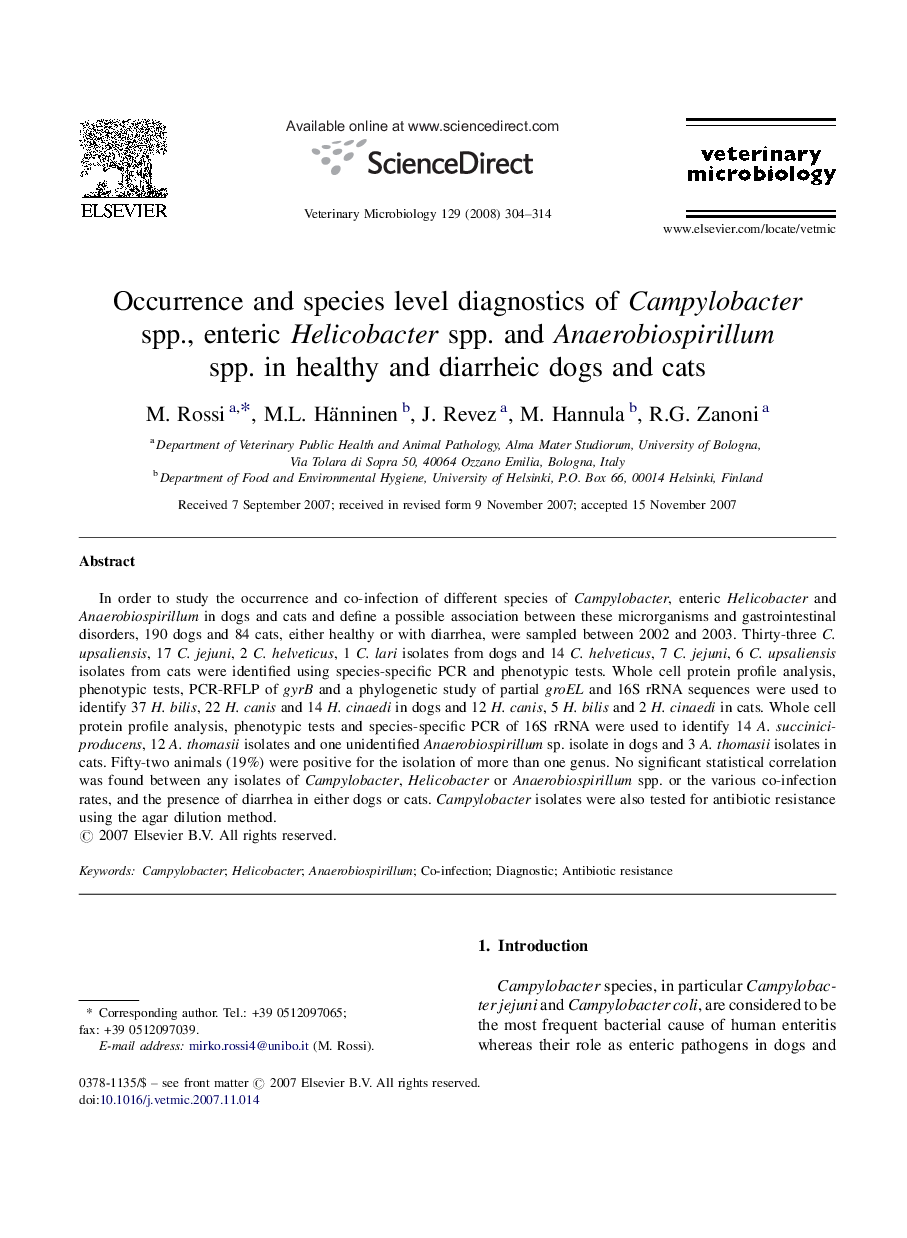| Article ID | Journal | Published Year | Pages | File Type |
|---|---|---|---|---|
| 2468781 | Veterinary Microbiology | 2008 | 11 Pages |
In order to study the occurrence and co-infection of different species of Campylobacter, enteric Helicobacter and Anaerobiospirillum in dogs and cats and define a possible association between these microrganisms and gastrointestinal disorders, 190 dogs and 84 cats, either healthy or with diarrhea, were sampled between 2002 and 2003. Thirty-three C. upsaliensis, 17 C. jejuni, 2 C. helveticus, 1 C. lari isolates from dogs and 14 C. helveticus, 7 C. jejuni, 6 C. upsaliensis isolates from cats were identified using species-specific PCR and phenotypic tests. Whole cell protein profile analysis, phenotypic tests, PCR-RFLP of gyrB and a phylogenetic study of partial groEL and 16S rRNA sequences were used to identify 37 H. bilis, 22 H. canis and 14 H. cinaedi in dogs and 12 H. canis, 5 H. bilis and 2 H. cinaedi in cats. Whole cell protein profile analysis, phenotypic tests and species-specific PCR of 16S rRNA were used to identify 14 A. succiniciproducens, 12 A. thomasii isolates and one unidentified Anaerobiospirillum sp. isolate in dogs and 3 A. thomasii isolates in cats. Fifty-two animals (19%) were positive for the isolation of more than one genus. No significant statistical correlation was found between any isolates of Campylobacter, Helicobacter or Anaerobiospirillum spp. or the various co-infection rates, and the presence of diarrhea in either dogs or cats. Campylobacter isolates were also tested for antibiotic resistance using the agar dilution method.
